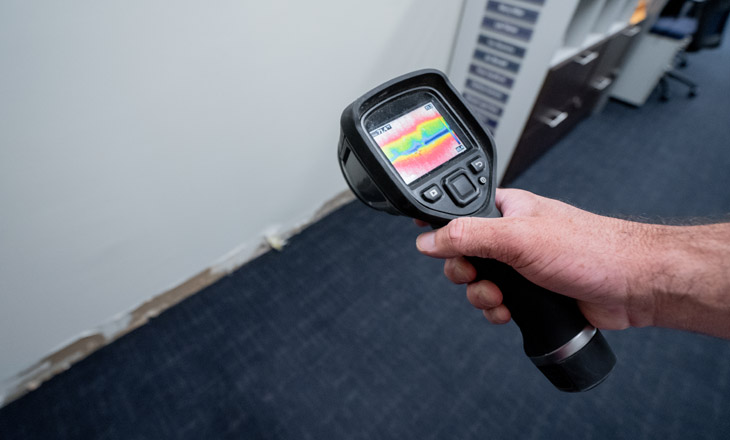Water Leak Detection: Exactly How to Identify and Take Care Of Leaks Prior To They Cause Damage
Water Leak Detection: Exactly How to Identify and Take Care Of Leaks Prior To They Cause Damage
Blog Article
Innovative Solutions for Very Early Detection of Water Leakages in Buildings and Framework
As the integrity of structures and infrastructure is extremely important, the difficulty of very early detection of water leakages has stimulated cutting-edge services that assure to transform the means we safeguard versus possible damages. From innovative leak detection modern technologies to the deployment of IoT sensing units for real-time surveillance, the landscape of leak prevention is evolving quickly. Artificial intelligence formulas provide a look right into the future of leak forecast, while thermal imaging offers a non-intrusive method for pinpointing concealed leakages. Automated water flow evaluation systems are reshaping exactly how leakages are determined and dealt with, paving the means for a proactive strategy to water leak discovery. Each of these services holds the crucial to guaranteeing the dependability and durability of our constructed atmosphere, prompting a shift in the direction of an extra sustainable and effective future.
Advanced Leakage Detection Technologies
Advanced leak detection technologies, geared up with cutting-edge sensing units and formulas, play an essential function in swiftly determining and identifying water leaks in various setups. Electro-magnetic sensing units can recognize changes in electromagnetic areas triggered by water, using yet one more layer of leak detection capability.

IoT Sensors for Real-Time Monitoring
In the realm of contemporary water leakage discovery, the assimilation of IoT sensors for real-time tracking stands for a crucial development in improving aggressive leakage detection abilities. These sensing units supply constant tracking of water supply, providing real-time data on water flow rates, stress variations, and temperature modifications. By leveraging IoT modern technology, these sensing units can spot also the tiniest abnormalities in water usage patterns, enabling early identification of possible leakages before they rise into major issues.
IoT sensors send information to a central system, where sophisticated algorithms evaluate the information and generate alerts or alerts when abnormalities are identified. This real-time surveillance ability enables homeowner or facility supervisors to without delay resolve leakages, decreasing water damages, minimizing repair service prices, and preserving water sources.
Furthermore, IoT sensors can be incorporated with structure monitoring systems, enabling computerized actions to detected leaks, such as turning off water shutoffs or triggering pumps to reduce the effect of leaks. Overall, the execution of IoT sensing units for real-time surveillance dramatically boosts the performance and performance of water leak detection in buildings and facilities.
Maker Discovering Algorithms for Leakage Prediction

One trick benefit of using artificial intelligence for leakage prediction is its capacity to constantly learn and boost its accuracy with time. As even more data is accumulated and fed right into the algorithm, it can fine-tune its predictions and adjust to changing problems, eventually increasing the integrity of leak discovery systems.
Furthermore, artificial intelligence formulas can assist in identifying refined indicators of leakages that may go unnoticed by typical tracking methods. water leak detection. By assessing complicated data collections in real-time, these formulas can offer early cautions and notifies, allowing for timely treatment and preventative maintenance to minimize prospective water damage and linked expenses
Utilizing Thermal Imaging for Leakage Detection
Thermal imaging technology uses a promising strategy for detecting water leakages great site in various systems and facilities. By utilizing infrared radiation and temperature level variances, thermal imaging video cameras can identify concealed leakages that are not easily noticeable to the nude eye. When water escapes from pipes or structures, it usually alters the temperature level of the bordering area, producing temperature level differentials that thermal video cameras can catch. These temperature level abnormalities are then translated right into noticeable images, highlighting the specific area of the leak.
Among the vital benefits of thermal imaging for leak detection is its non-intrusive nature. Unlike conventional techniques that might call for burglarizing wall surfaces or floors to find leakages, thermal imaging enables non-destructive testing. This not just saves time and reduces expenses but also reduces disturbance to the building or facilities being analyzed. Additionally, thermal imaging can rapidly scan big locations, providing a comprehensive summary of possible leak sources in a prompt way. In general, the usage of thermal imaging innovation improves the effectiveness and precision of water leakage discovery, making it a useful tool for preserving the integrity of structures and facilities.
Automated Water Circulation Analysis Equipments
Exactly how can automatic water flow evaluation systems transform the discovery and monitoring of leakages in various systems and infrastructures? Automated water flow analysis systems offer an aggressive technique to leak discovery by continually checking water circulation prices and patterns. By developing baseline data, these systems can promptly recognize variances that may show a leak, making it possible for timely treatment Learn More Here to prevent extensive damages.
These systems make use of innovative formulas to analyze real-time information and provide prompt informs when anomalies are detected, permitting speedy action to be taken. Additionally, automatic water circulation analysis systems can be integrated with structure administration systems or IoT platforms, enhancing general efficiency and making it possible for remote monitoring capabilities.
Furthermore, the data collected by these systems can be made use of for anticipating maintenance functions, helping to recognize possible powerlessness in the infrastructure prior to leaks happen. Generally, the implementation of automatic water circulation evaluation systems can dramatically improve leakage discovery and administration techniques, inevitably leading to set you back financial savings, decreased water waste, and increased sustainability in buildings and infrastructure.

Conclusion
Finally, the assimilation of sophisticated leakage detection innovations, IoT sensors, maker discovering formulas, thermal imaging, and automated water flow analysis systems supplies ingenious options for early detection of water leaks in buildings and facilities. These innovations allow click here to read real-time monitoring, forecast of leaks, and efficient discovery techniques to stop water damages and wastefulness. Executing these solutions can help in keeping the stability and sustainability of water supply in numerous settings.
Report this page